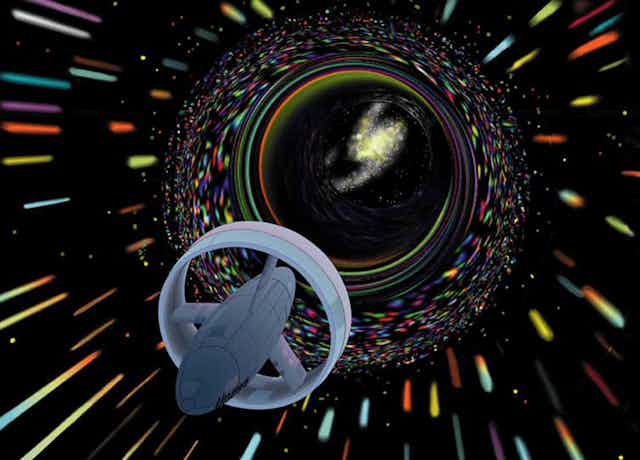

Warp drives: Physicists give chances of faster-than -light space travel a boost
Associate Professor of Physics, Oklahoma State University
Disclosure statement
Mario Borunda does not work for, consult, own shares in or receive funding from any company or organization that would benefit from this article, and has disclosed no relevant affiliations beyond their academic appointment.
Oklahoma State University provides funding as a member of The Conversation US.
View all partners
The closest star to Earth is Proxima Centauri. It is about 4.25 light-years away, or about 25 trillion miles (40 trillion km). The fastest ever spacecraft, the now- in-space Parker Solar Probe will reach a top speed of 450,000 mph. It would take just 20 seconds to go from Los Angeles to New York City at that speed, but it would take the solar probe about 6,633 years to reach Earth’s nearest neighboring solar system.
If humanity ever wants to travel easily between stars, people will need to go faster than light. But so far, faster-than-light travel is possible only in science fiction.
In Issac Asimov’s Foundation series , humanity can travel from planet to planet, star to star or across the universe using jump drives. As a kid, I read as many of those stories as I could get my hands on. I am now a theoretical physicist and study nanotechnology, but I am still fascinated by the ways humanity could one day travel in space.
Some characters – like the astronauts in the movies “Interstellar” and “Thor” – use wormholes to travel between solar systems in seconds. Another approach – familiar to “Star Trek” fans – is warp drive technology. Warp drives are theoretically possible if still far-fetched technology. Two recent papers made headlines in March when researchers claimed to have overcome one of the many challenges that stand between the theory of warp drives and reality.
But how do these theoretical warp drives really work? And will humans be making the jump to warp speed anytime soon?
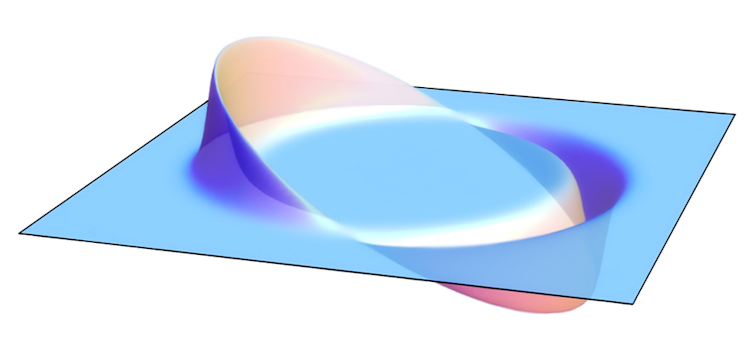
Compression and expansion
Physicists’ current understanding of spacetime comes from Albert Einstein’s theory of General Relativity . General Relativity states that space and time are fused and that nothing can travel faster than the speed of light. General relativity also describes how mass and energy warp spacetime – hefty objects like stars and black holes curve spacetime around them. This curvature is what you feel as gravity and why many spacefaring heroes worry about “getting stuck in” or “falling into” a gravity well. Early science fiction writers John Campbell and Asimov saw this warping as a way to skirt the speed limit.
What if a starship could compress space in front of it while expanding spacetime behind it? “Star Trek” took this idea and named it the warp drive.
In 1994, Miguel Alcubierre, a Mexican theoretical physicist, showed that compressing spacetime in front of the spaceship while expanding it behind was mathematically possible within the laws of General Relativity . So, what does that mean? Imagine the distance between two points is 10 meters (33 feet). If you are standing at point A and can travel one meter per second, it would take 10 seconds to get to point B. However, let’s say you could somehow compress the space between you and point B so that the interval is now just one meter. Then, moving through spacetime at your maximum speed of one meter per second, you would be able to reach point B in about one second. In theory, this approach does not contradict the laws of relativity since you are not moving faster than light in the space around you. Alcubierre showed that the warp drive from “Star Trek” was in fact theoretically possible.
Proxima Centauri here we come, right? Unfortunately, Alcubierre’s method of compressing spacetime had one problem: it requires negative energy or negative mass.
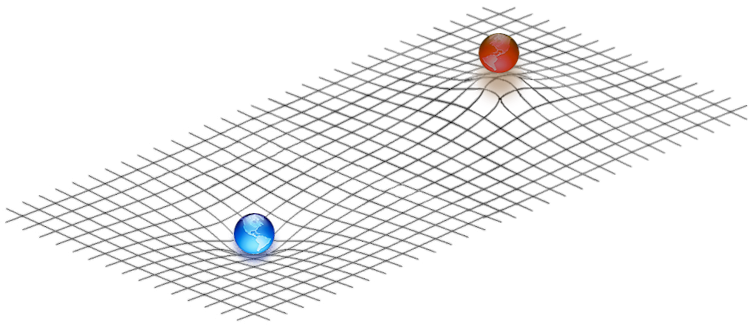
A negative energy problem
Alcubierre’s warp drive would work by creating a bubble of flat spacetime around the spaceship and curving spacetime around that bubble to reduce distances. The warp drive would require either negative mass – a theorized type of matter – or a ring of negative energy density to work. Physicists have never observed negative mass, so that leaves negative energy as the only option.
To create negative energy, a warp drive would use a huge amount of mass to create an imbalance between particles and antiparticles. For example, if an electron and an antielectron appear near the warp drive, one of the particles would get trapped by the mass and this results in an imbalance. This imbalance results in negative energy density. Alcubierre’s warp drive would use this negative energy to create the spacetime bubble.
But for a warp drive to generate enough negative energy, you would need a lot of matter. Alcubierre estimated that a warp drive with a 100-meter bubble would require the mass of the entire visible universe .
In 1999, physicist Chris Van Den Broeck showed that expanding the volume inside the bubble but keeping the surface area constant would reduce the energy requirements significantly , to just about the mass of the sun. A significant improvement, but still far beyond all practical possibilities.
A sci-fi future?
Two recent papers – one by Alexey Bobrick and Gianni Martire and another by Erik Lentz – provide solutions that seem to bring warp drives closer to reality.
Bobrick and Martire realized that by modifying spacetime within the bubble in a certain way, they could remove the need to use negative energy. This solution, though, does not produce a warp drive that can go faster than light.
[ Over 100,000 readers rely on The Conversation’s newsletter to understand the world. Sign up today .]
Independently, Lentz also proposed a solution that does not require negative energy. He used a different geometric approach to solve the equations of General Relativity, and by doing so, he found that a warp drive wouldn’t need to use negative energy. Lentz’s solution would allow the bubble to travel faster than the speed of light.
It is essential to point out that these exciting developments are mathematical models. As a physicist, I won’t fully trust models until we have experimental proof. Yet, the science of warp drives is coming into view. As a science fiction fan, I welcome all this innovative thinking. In the words of Captain Picard , things are only impossible until they are not.
- General Relativity
- Theoretical physics
- Interstellar
- Speed of light
- Albert Einstein
Want to write?
Write an article and join a growing community of more than 183,700 academics and researchers from 4,959 institutions.
Register now

The U.S.S. Enterprise , depicted here in the 2013 movie Star Trek: Into Darkness , relies on its warp drive to zip across the galaxy.
Inside the Quest for a Real ‘Star Trek’ Warp Drive
It may be a while before starship captains can race across the galaxy, but engineers and physicists have a few ideas for making it so.
Within the Star Trek universe, traveling across the galaxy is a breeze thanks to the famed warp drive . This fictional technology allows humans and other civilizations to zoom between star systems in days rather than centuries.
Such rapid travel times are impossible in the real world, because our best theory for the way the universe works, Einstein’s special relativity , says that nothing moves faster than the speed of light.
While current rocket propulsion systems are bound by this law, plenty of hopeful engineers and physicists are working on concepts that might bring us a step closer to Star Trek ’s vision of racing across the cosmos.
“Currently, even the most advanced ideas behind interstellar travel entail trip times of decades and centuries to even the closest stars, due to the restrictions of special relativity, and our abilities—or lack of—to travel at an appreciable fraction of the speed of light,” says Richard Obousy , director and founder of Icarus Interstellar, a nonprofit dedicated to making progress toward interstellar flight.
“Being able to build starships with the capability to travel faster than the speed of light would open the galaxy for exploration and possible colonization by humans.”
Nuclear Engines
Distances in space are so vast that astronomers usually measure them in light-years, the distance light can travel in a year’s time. A single light-year equals about six trillion miles.
For Hungry Minds
The closest star to our solar system, Proxima Centauri, is 4.23 light-years away, so even traveling at the speed of light, a one-way voyage there would take 4.23 years. That may seem pokey, but it would be a huge improvement over current technology.
Right now, the fastest spacecraft headed away from Earth is Voyager 1, which is puttering along at about 38,600 miles an hour. At that rate, it would take more than 70,000 years to reach Proxima Centauri.
Still, various teams have proposed ways to at least reach a fraction of light speed and hasten our exploration of interstellar space.
Back in 1958, researchers at San Diego-based defense contractor General Atomics came up with Project Orion , which involved a spacecraft driven essentially by nuclear bombs. A controlled series of nuclear explosions would propel the ship at high speeds, rapidly carrying a hundred tons of cargo and eight astronauts to places like Mars and even the outer solar system.

Faster propulsion technology would allow us to visit our galactic neighbors, like this satellite of the Milky Way known as the Large Magellanic Cloud.
Blueprints were also created showing how to adapt the technology for interstellar travel. However, all experimentation with this so-called nuclear-pulse propulsion came to a halt with the Nuclear Test Ban Treaty of 1963.
Announced earlier this year, the ambitious Breakthrough StarShot initiative represents a less explosive effort to undertake an interstellar mission. Run by a conglomerate of billionaires and big thinkers, including famed physicist Stephen Hawking, the project’s goal is to send a flotilla of postage stamp-size spacecraft to Alpha Centauri, a triple star system that’s 4.3 light-years away. (See “Is the New $100 Million ‘Starshot’ for Real?” )
You May Also Like

U.S. returns to the moon as NASA's Odysseus successfully touches down

What is a sonic boom—and is it dangerous?

NASA has a plan to clean up space junk—but is going green enough?
The tiny spacecraft would be attached to a thin light sail, a piece of technology that would allow mission managers to propel the probes with lasers shining from Earth’s orbit. The lasers would accelerate the craft to 20 percent the speed of light, and the probes would arrive at their destination in roughly 20 years.
While many of the tiny travelers may never make it to Alpha Centauri, a few of them should survive and may even fly past any planets orbiting the far-off stars , beaming back data about these alien worlds.
“I’m incredibly excited to see private money being used to explore breakthrough ideas that may advance the field of interstellar flight,” Obousy says.
“I hope to see more like this in the future. While there are engineering challenges associated with the Starshot Initiative, none appear insurmountable.”
Warping Reality
Of course, the real breakthrough would be a true warp drive, which requires technology to catch up with our theoretical designs.
In 1994, Trek fans got a glimmer of hope from Mexican theoretical physicist Miguel Alcubierre, who came up with a radical theory of hyper-fast space propulsion that doesn't break Einstein’s special relativity.
Instead of accelerating the spacecraft itself to light speed, why not bend, or warp, the fabric of space and time around the ship itself? Alcubierre presented calculations that produce a bubble in space-time in which one end is expanding and the other is contracting. A spaceship could, in theory, be carried along with the warp bubble and accelerated to velocities up to 10 times the speed of light.
While that sounds simple on paper, to make it work, we may need to harness exotic forms of matter, like antimatter, that for now are poorly understood. In addition, numerous unsolved issues plague the creation and control of a warp bubble, Obousy says.
“One such problem, for example, is the idea of causal disconnection, which implies that any spacecraft sitting within the bubble would not be able to ‘communicate’ with the exterior of the bubble, suggesting that a ship would not be able to ‘turn off’ the bubble once inside of it,” he notes.
As is often the case in space travel, developing true interstellar travel like what we see in Star Trek will require significant changes in the cost and energy requirements.
“Currently, the amount of energy and money required to entertain the notion of manned interstellar travel is measured in large fractions of global output—specifically, tens of trillions of dollars, and energy measured on the scale of what many large countries use annually,” he says.
Still, he adds, “the finest minds of the 15th century could not have predicted the technological wonders of the 21st century. Similarly, who are we to say what technology the humans of the 27th century will have mastered.”
Andrew Fazekas, the Night Sky Guy, is the author of Star Trek: The Official Guide to Our Universe and host of NG Live! " Mankind to Mars " presentations. Follow him on Twitter , Facebook , and his website .
Related Topics
- TELEVISION AND VIDEO

Why go back to the moon? NASA’s Artemis program has even bigger ambitions

Why this company sent ancient human fossils into space
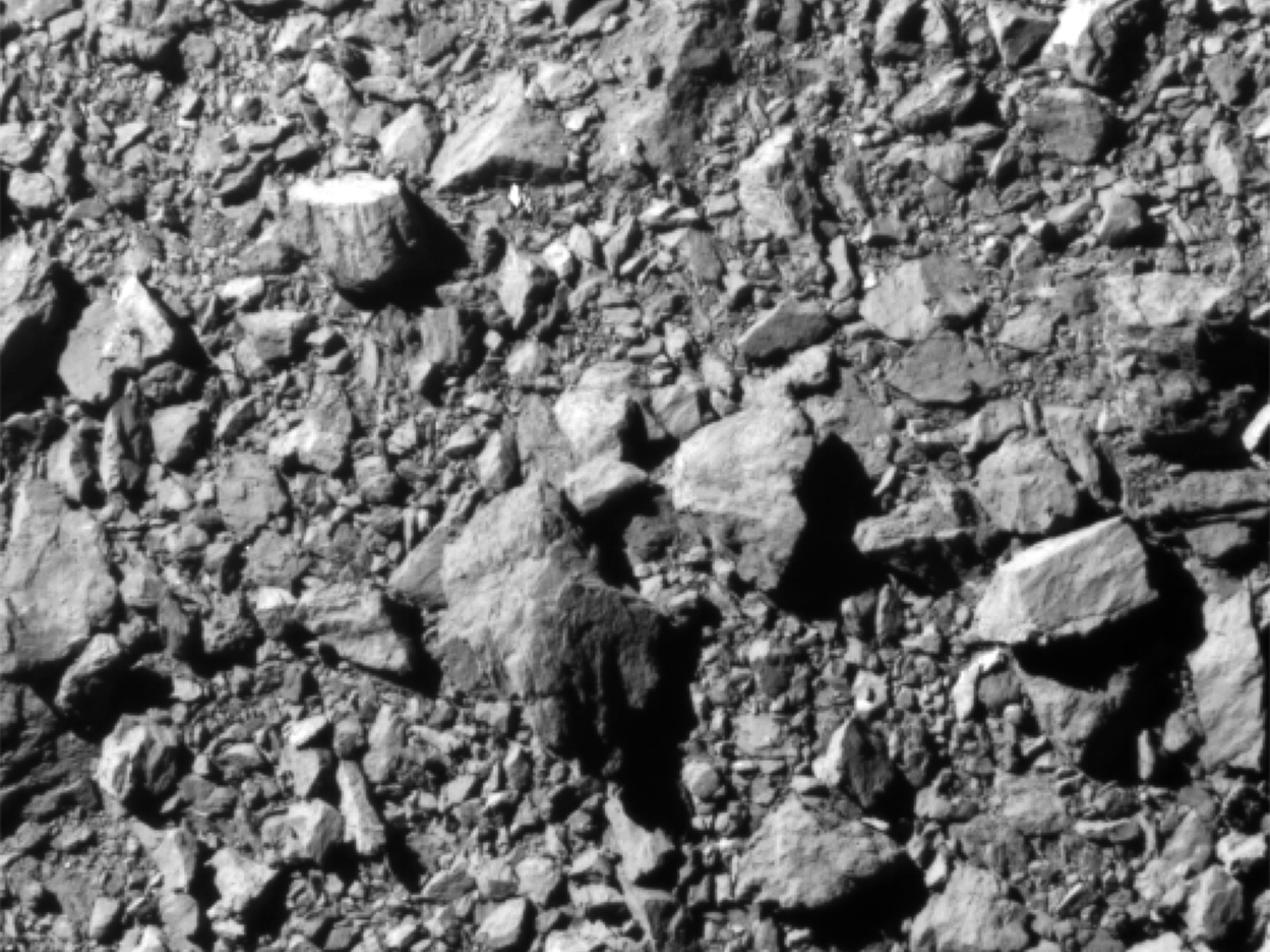
NASA smashed an asteroid with a rocket. The debris could hit Mars.
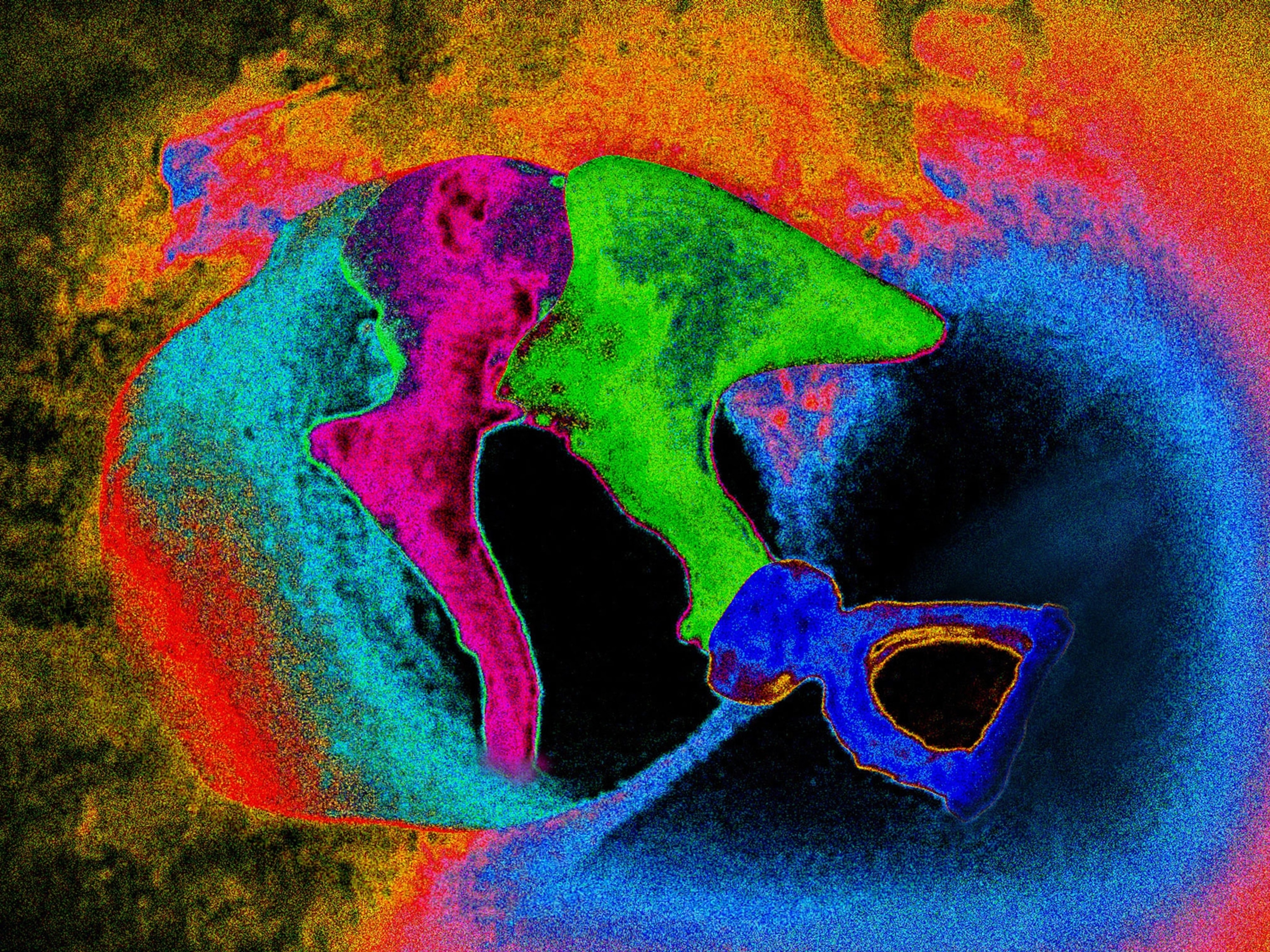
Noise pollution harms more than your hearing

Historic moon lander malfunctions after launch—but NASA isn’t panicked (yet)
- Environment
- Perpetual Planet
History & Culture
- History & Culture
- History Magazine
- Mind, Body, Wonder
- Paid Content
- Terms of Use
- Privacy Policy
- Your US State Privacy Rights
- Children's Online Privacy Policy
- Interest-Based Ads
- About Nielsen Measurement
- Do Not Sell or Share My Personal Information
- Nat Geo Home
- Attend a Live Event
- Book a Trip
- Inspire Your Kids
- Shop Nat Geo
- Visit the D.C. Museum
- Learn About Our Impact
- Support Our Mission
- Advertise With Us
- Customer Service
- Renew Subscription
- Manage Your Subscription
- Work at Nat Geo
- Sign Up for Our Newsletters
- Contribute to Protect the Planet
Copyright © 1996-2015 National Geographic Society Copyright © 2015-2024 National Geographic Partners, LLC. All rights reserved
We have completed maintenance on Astronomy.com and action may be required on your account. Learn More

- Login/Register
- Solar System
- Exotic Objects
- Upcoming Events
- Deep-Sky Objects
- Observing Basics
- Telescopes and Equipment
- Astrophotography
- Space Exploration
- Human Spaceflight
- Robotic Spaceflight
- The Magazine
Warp drives: Physicists investigate faster-than-light space travel
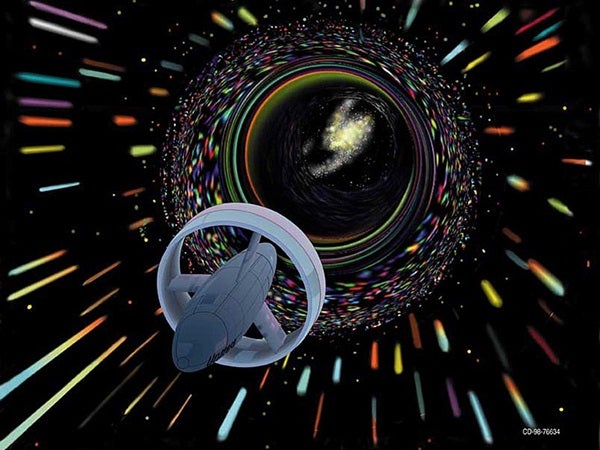
The closest star to Earth is Proxima Centauri. It is about 4.25 light-years away, or about 25 trillion miles (40 trillion kilometers). The fastest ever spacecraft, the now- in-space Parker Solar Probe will reach a top speed of 450,000 mph. It would take just 20 seconds to go from Los Angeles to New York City at that speed, but it would take the solar probe about 6,633 years to reach Earth’s nearest neighboring solar system.
If humanity ever wants to travel easily between stars, people will need to go faster than light. But so far, faster-than-light travel is possible only in science fiction.
In Issac Asimov’s Foundation series , humanity can travel from planet to planet, star to star or across the universe using jump drives. As a kid, I read as many of those stories as I could get my hands on. I am now a theoretical physicist and study nanotechnology, but I am still fascinated by the ways humanity could one day travel in space.
Some characters – like the astronauts in the movies “Interstellar” and “Thor” – use wormholes to travel between solar systems in seconds. Another approach – familiar to “Star Trek” fans – is warp drive technology. Warp drives are theoretically possible if still far-fetched technology. Two recent papers made headlines in March when researchers claimed to have overcome one of the many challenges that stand between the theory of warp drives and reality.
But how do these theoretical warp drives really work? And will humans be making the jump to warp speed anytime soon?
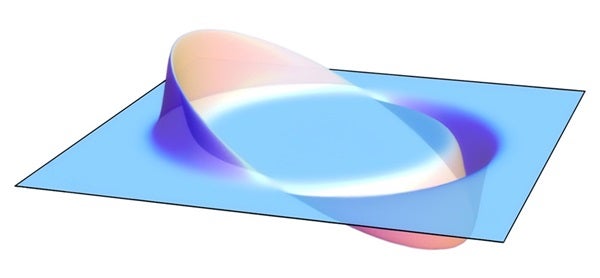
Compression and expansion
Physicists’ current understanding of spacetime comes from Albert Einstein’s theory of general relativity . General relativity states that space and time are fused and that nothing can travel faster than the speed of light. General relativity also describes how mass and energy warp spacetime – hefty objects like stars and black holes curve spacetime around them. This curvature is what you feel as gravity and why many spacefaring heroes worry about “getting stuck in” or “falling into” a gravity well. Early science fiction writers John Campbell and Asimov saw this warping as a way to skirt the speed limit.
What if a starship could compress space in front of it while expanding spacetime behind it? “Star Trek” took this idea and named it the warp drive.
In 1994, Miguel Alcubierre, a Mexican theoretical physicist, showed that compressing spacetime in front of the spaceship while expanding it behind was mathematically possible within the laws of General Relativity . So, what does that mean? Imagine the distance between two points is 33 feet (10 meters). If you are standing at point A and can travel one meter per second, it would take 10 seconds to get to point B. However, let’s say you could somehow compress the space between you and point B so that the interval is now just one meter. Then, moving through spacetime at your maximum speed of one meter per second, you would be able to reach point B in about one second. In theory, this approach does not contradict the laws of relativity since you are not moving faster than light in the space around you. Alcubierre showed that the warp drive from “Star Trek” was in fact theoretically possible.
Proxima Centauri here we come, right? Unfortunately, Alcubierre’s method of compressing spacetime had one problem: it requires negative energy or negative mass.
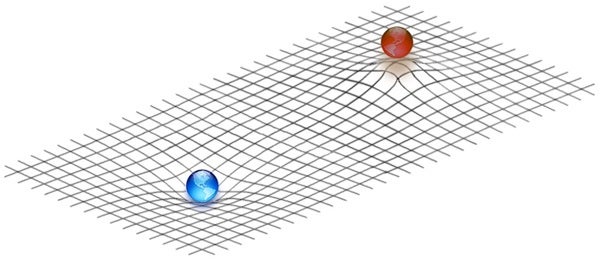
A negative energy problem
Alcubierre’s warp drive would work by creating a bubble of flat spacetime around the spaceship and curving spacetime around that bubble to reduce distances. The warp drive would require either negative mass – a theorized type of matter – or a ring of negative energy density to work. Physicists have never observed negative mass, so that leaves negative energy as the only option.
To create negative energy, a warp drive would use a huge amount of mass to create an imbalance between particles and antiparticles. For example, if an electron and an antielectron appear near the warp drive, one of the particles would get trapped by the mass and this results in an imbalance. This imbalance results in negative energy density. Alcubierre’s warp drive would use this negative energy to create the spacetime bubble.
But for a warp drive to generate enough negative energy, you would need a lot of matter. Alcubierre estimated that a warp drive with a 100-meter bubble would require the mass of the entire visible universe .
In 1999, physicist Chris Van Den Broeck showed that expanding the volume inside the bubble but keeping the surface area constant would reduce the energy requirements significantly , to just about the mass of the Sun. A significant improvement, but still far beyond all practical possibilities.
A sci-fi future?
Two recent papers – one by Alexey Bobrick and Gianni Martire and another by Erik Lentz – provide solutions that seem to bring warp drives closer to reality.
Bobrick and Martire realized that by modifying spacetime within the bubble in a certain way, they could remove the need to use negative energy. This solution, though, does not produce a warp drive that can go faster than light.
Independently, Lentz also proposed a solution that does not require negative energy. He used a different geometric approach to solve the equations of general relativity, and by doing so, he found that a warp drive wouldn’t need to use negative energy. Lentz’s solution would allow the bubble to travel faster than the speed of light.
It is essential to point out that these exciting developments are mathematical models. As a physicist, I won’t fully trust models until we have experimental proof. Yet, the science of warp drives is coming into view. As a science fiction fan, I welcome all this innovative thinking. In the words of Captain Picard , things are only impossible until they are not.
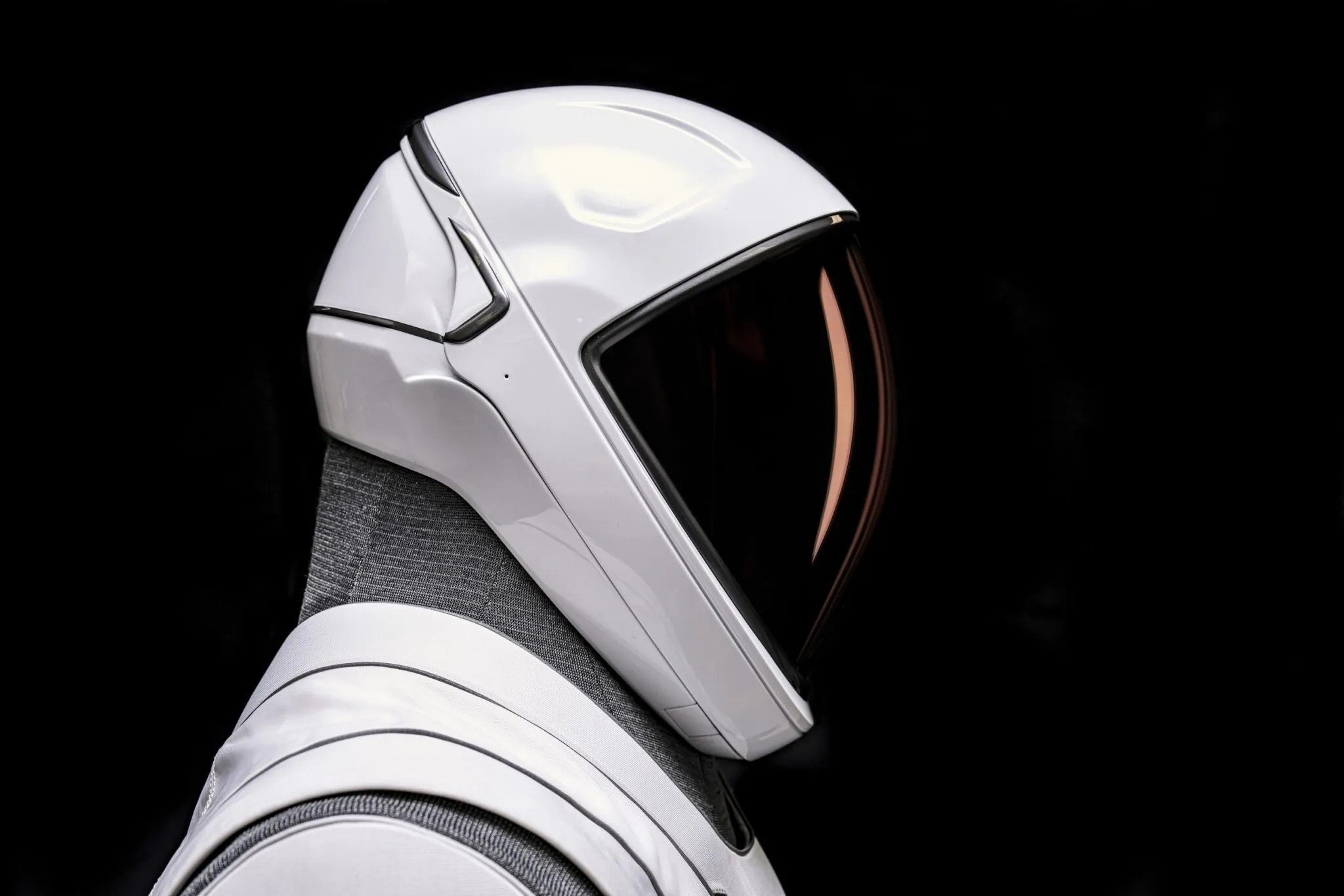
What Is Polaris Dawn? The upcoming SpaceX mission, explained
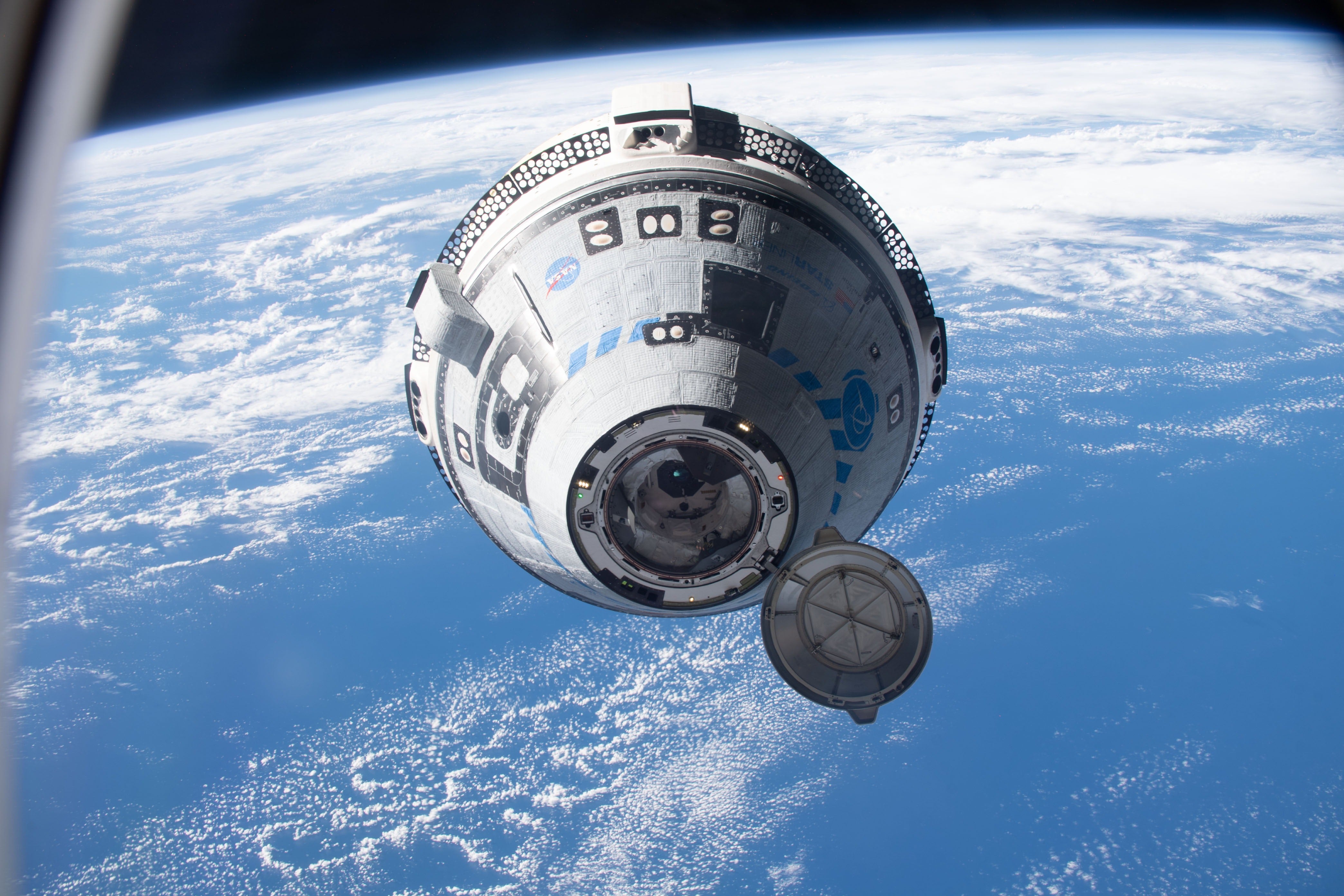
Boeing’s Starliner launch – delayed again – will be an important milestone for commercial spaceflight
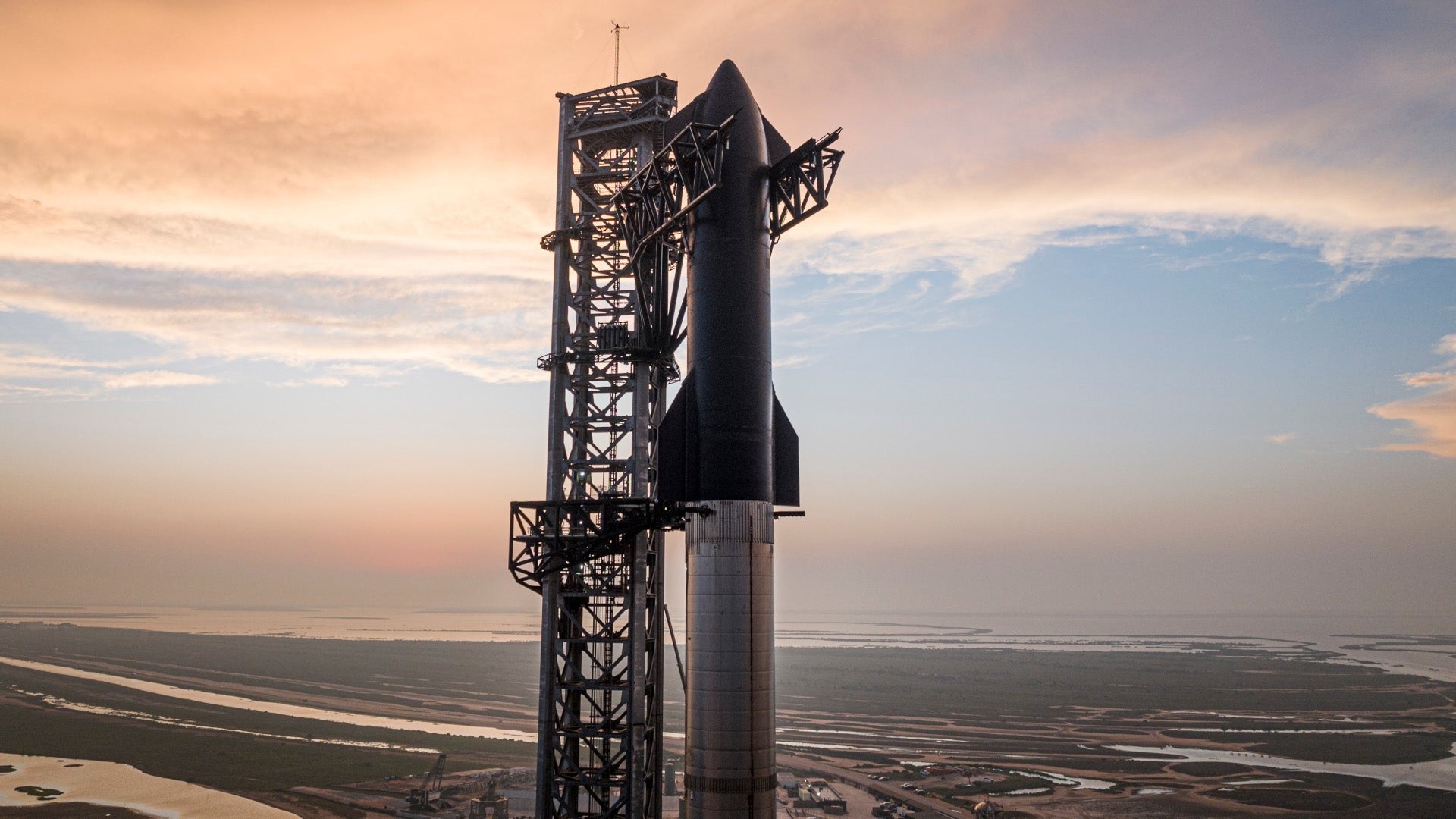
SpaceX adds tourism offering to website
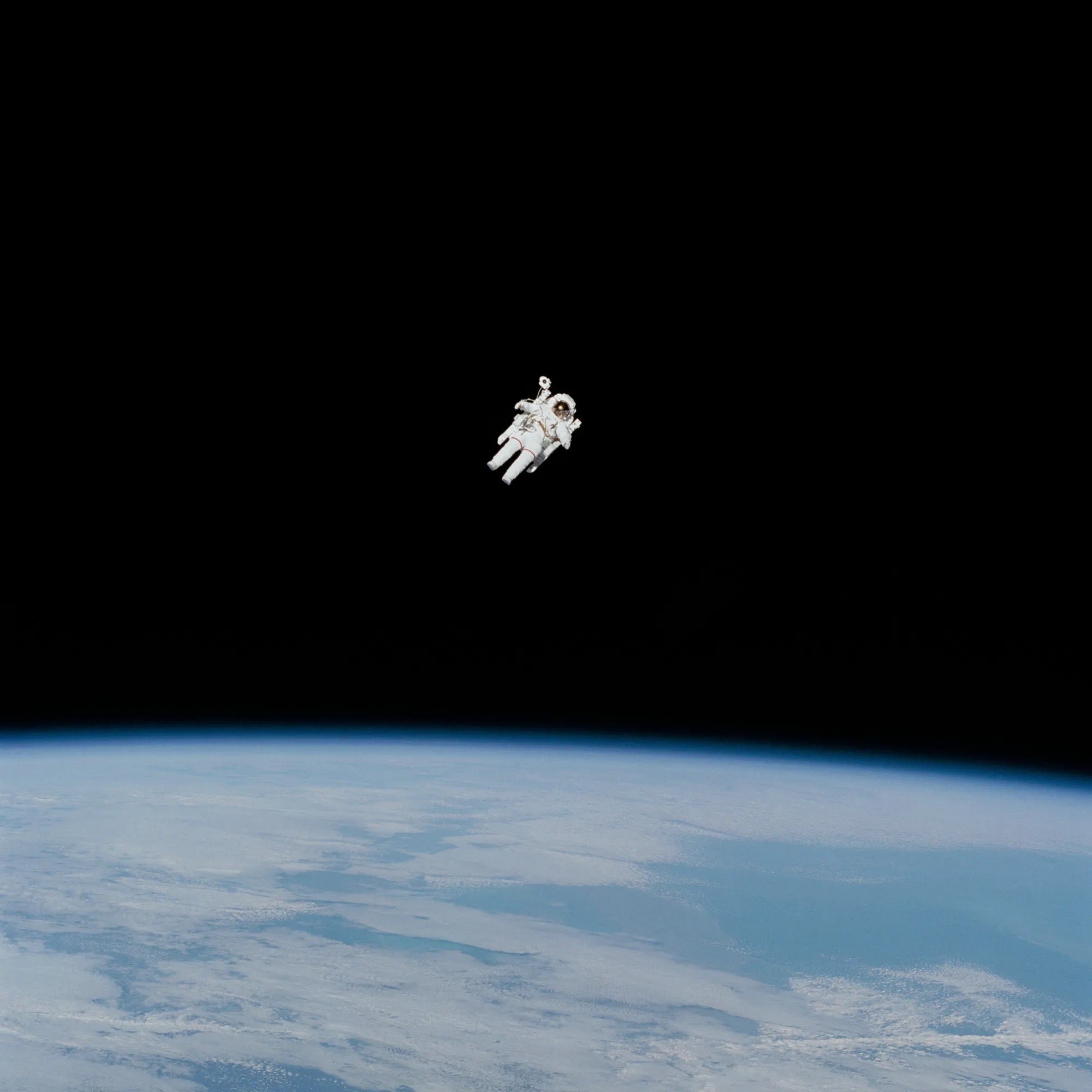
Astronauts have a surprising ability to gauge distances in space
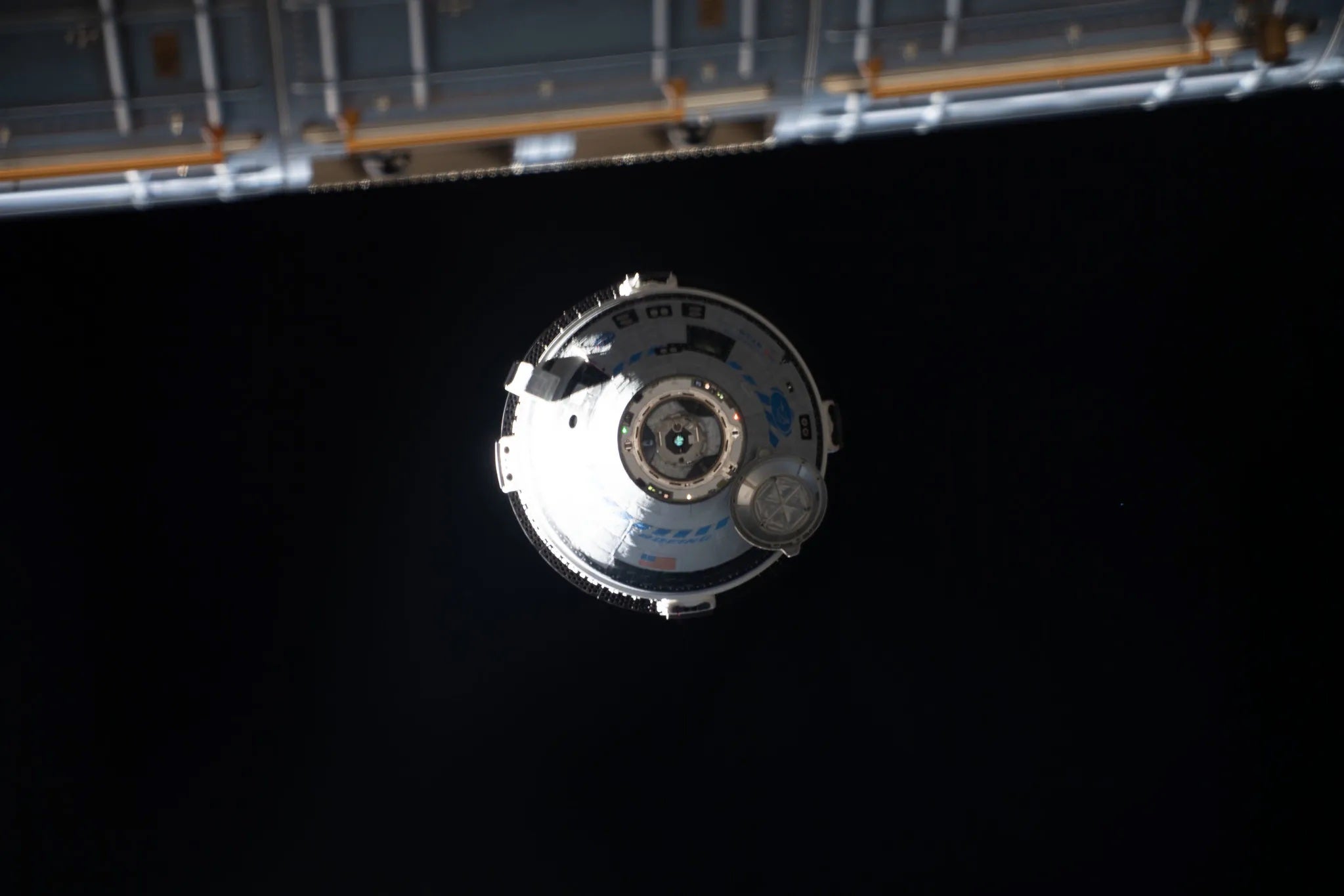
The NASA/Boeing Starliner launches soon. Here’s what to know.
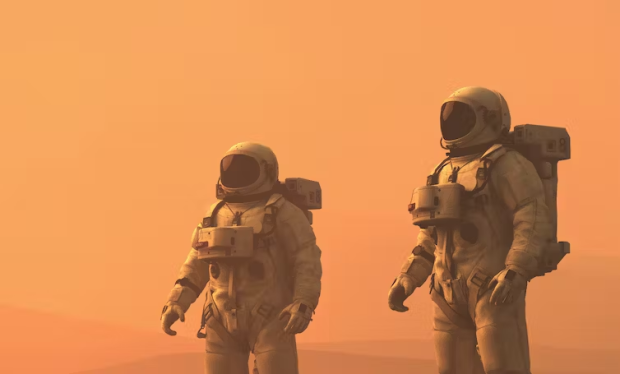
What happens if someone dies in space?

Meet Katya Echazarreta, the first Mexican-born woman to travel to space

A metal chunk that burst through a Florida home came from the ISS

An updated list of space missions: Current and upcoming voyages

TrendyDigests
Advancements in Star Trek's Warp Drive Technology: Nearing Reality?
Posted: May 17, 2024 | Last updated: May 17, 2024

In the realm of science fiction, warp drives have long been a staple of interstellar travel, propelling spaceships to incredible velocities and allowing characters to traverse galaxies in a blink of an eye.
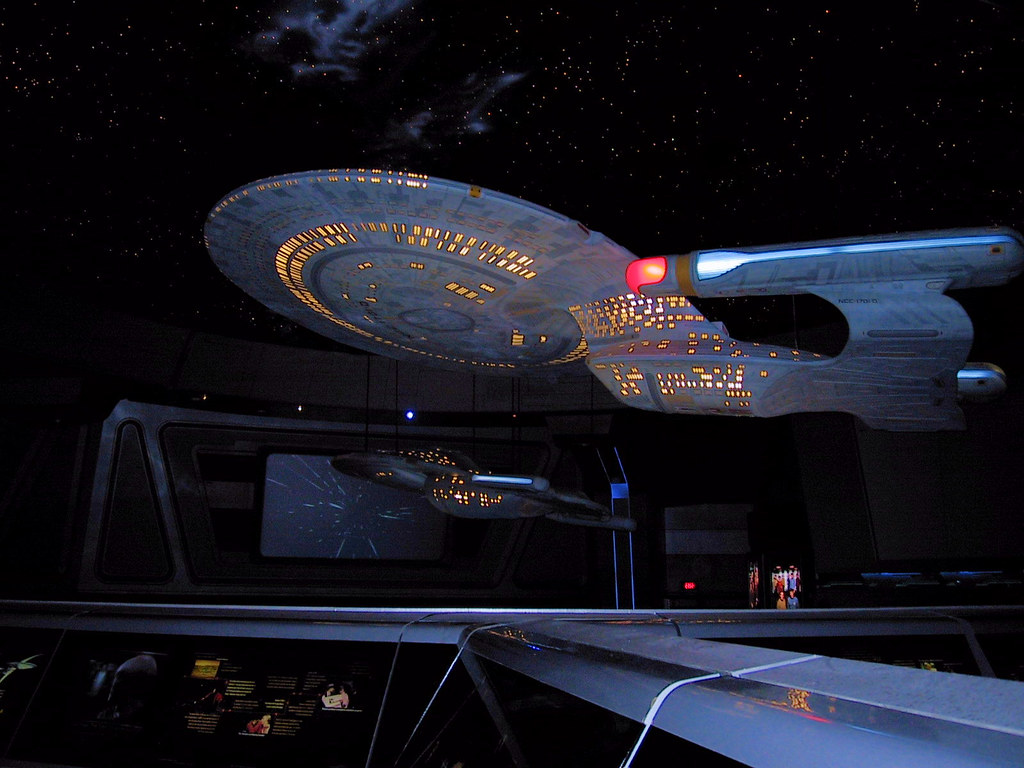
The concept, popularized by "Star Trek," once seemed firmly rooted in the land of make-believe.

However, a new study suggests that warp drives may not be as far-fetched as previously thought, with researchers proposing a model that could theoretically allow objects to travel at high but subluminal speeds without the need for exotic negative energy.

The groundbreaking study, led by Jared Fuchs of the University of Alabama, Huntsville, and the research think tank Applied Physics, marks a significant shift in the discourse around the feasibility of warp drives.

The team's model utilizes a complex combination of traditional and novel gravitational techniques to create a "warp bubble" capable of transporting objects swiftly within the bounds of known physics.

While their proposed engine would not achieve faster-than-light travel, the research underscores the potential for high-speed movement that aligns with our current understanding of the universe's laws.

Despite the study's promising indications, it's important to temper expectations.

This is, after all, a single modeling study, and practical application is still a distant horizon. Even if the mathematics reported in the research holds up under scrutiny, the construction of an actual warp drive remains a monumental challenge yet to be overcome.
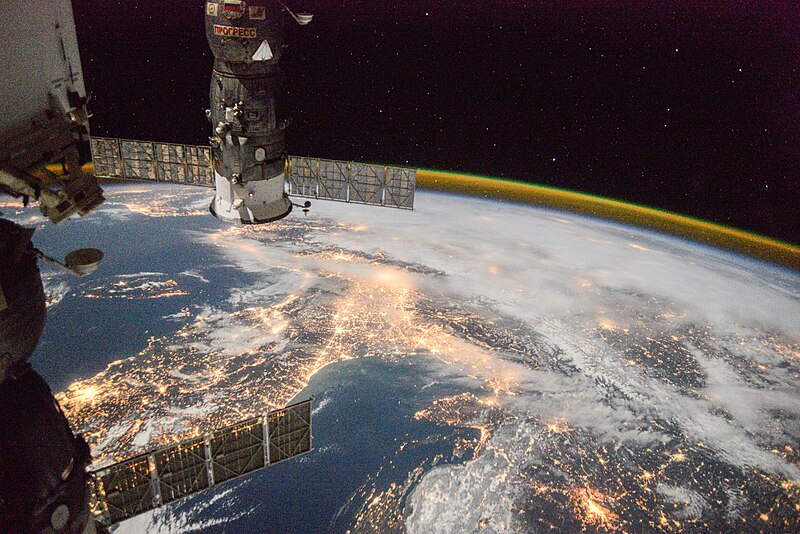
Nonetheless, the study provides a fascinating glimpse into a future where science fiction edges closer to science fact, opening new avenues for discussion and exploration in the field of interstellar propulsion.

Fuchs and his team acknowledge this fact, emphasizing that their research may serve as a foundational building block towards achieving efficient interstellar travel in the future.
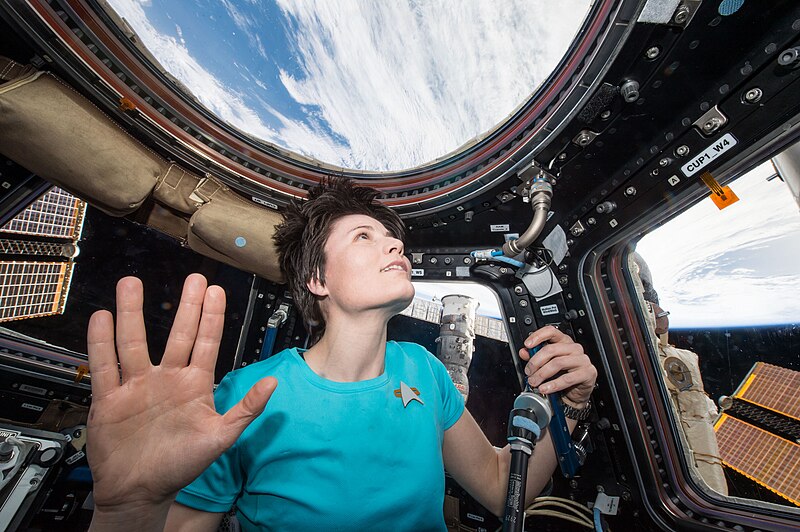
“We’re not yet preparing for interstellar voyages,” acknowledged Gianni Martire, CEO of Applied Physics, in a statement. “But this research heralds a new era of possibilities. We’re continuing to make steady progress as humanity embarks on the Warp Age.”

More for You
McDonald’s $5 menu is out – and people are not happy
4 dead as destructive thunderstorm blasts Houston
The NFL is giving primetime audiences a front row seat to the end of Aaron Rodgers
The Best Movies Streaming on Paramount Plus
Billionaire investor Ray Dalio warns U.S. is ‘on the brink’ and estimates a more than 1 in 3 chance of civil war
After Adobe collapse, Figma deal allows employees to sell shares at $12.5 billion valuation
Archaeologists Found a Family’s 3 Ancient Tombs Filled to the Brim With Treasure
Joe Biden's Executive Privilege Move Sparks Backlash
Refugee 'so proud' to be town's first Hindu mayor
The Coolest Car From the Year You Were Born (1945-1995)
Netflix Has Finally Made An Announcement About The Future Of 3 Body Problem
Ninja takes on YETI with its first ever cool box, the FrostVault
Strange structures discovered in the Pacific could change our understanding of Earth
The Best Handguns of 2023
Stuart Harrow Wins the Unlikeliest of Supreme Court Cases
Under Armour is laying off workers as retailer says North America sales will plunge this year
Tom Brady admits officials made wrong call in 2017 AFC Championship Game
Nuggets plan to continue excluding Aaron Gordon from team dinners amid playoff winning streak
Hertz sold a bunch of Teslas and it turns out they're all kinds of trouble for their new owners
Marvel's ‘Silk: Spider Society' Dead at Amazon

Suggested Searches
- Climate Change
- Expedition 64
- Mars perseverance
- SpaceX Crew-2
- International Space Station
- View All Topics A-Z
Humans in Space
Earth & climate, the solar system, the universe, aeronautics, learning resources, news & events.

NASA Tests Technology, Practices Artemis Moonwalks in Arizona Desert

Mission Manager Update: VIPER Rover Approved to Move into Environmental Testing!

How ‘Glowing’ Plants Could Help Scientists Predict Flash Drought
- Search All NASA Missions
- A to Z List of Missions
- Upcoming Launches and Landings
- Spaceships and Rockets
- Communicating with Missions
- James Webb Space Telescope
- Hubble Space Telescope
- Why Go to Space
- Astronauts Home
- Commercial Space
- Destinations
- Living in Space
- Explore Earth Science
- Earth, Our Planet
- Earth Science in Action
- Earth Multimedia
- Earth Science Researchers
- Pluto & Dwarf Planets
- Asteroids, Comets & Meteors
- The Kuiper Belt
- The Oort Cloud
- Skywatching
- The Search for Life in the Universe
- Black Holes
- The Big Bang
- Dark Energy & Dark Matter
- Earth Science
- Planetary Science
- Astrophysics & Space Science
- The Sun & Heliophysics
- Biological & Physical Sciences
- Lunar Science
- Citizen Science
- Astromaterials
- Aeronautics Research
- Human Space Travel Research
- Science in the Air
- NASA Aircraft
- Flight Innovation
- Supersonic Flight
- Air Traffic Solutions
- Green Aviation Tech
- Drones & You
- Technology Transfer & Spinoffs
- Space Travel Technology
- Technology Living in Space
- Manufacturing and Materials
- Science Instruments
- For Kids and Students
- For Educators
- For Colleges and Universities
- For Professionals
- Science for Everyone
- Requests for Exhibits, Artifacts, or Speakers
- STEM Engagement at NASA
- NASA's Impacts
- Centers and Facilities
- Directorates
- Organizations
- People of NASA
- Internships
- Our History
- Doing Business with NASA
- Get Involved
- Aeronáutica
- Ciencias Terrestres
- Sistema Solar
- All NASA News
- Video Series on NASA+
- Newsletters
- Social Media
- Media Resources
- Upcoming Launches & Landings
- Virtual Events
- Sounds and Ringtones
- Interactives
- STEM Multimedia

How NASA Tracked the Most Intense Solar Storm in Decades

5 Things to Know About NASA’s Tiny Twin Polar Satellites

NASA’s X-59 Passes Milestone Toward Safe First Flight

Eleasa Kim: Pioneering CLDP Payload Operations and Cultural Integration

Station Science 101 | Research in Microgravity: Higher, Faster, Longer

NASA Teammates Recall Favorite Memories Aboard Flying Laboratory

NASA’s Juno Provides High-Definition Views of Europa’s Icy Shell

The Next Full Moon is the Flower, Corn, or Corn Planting Moon


Binoculars: A Great First Telescope

Discovery Alert: An Earth-sized World and Its Ultra-cool Star

Hubble Views the Dawn of a Sun-like Star

The Big Event, 2024

Amendment 14: F.19 Research Initiation Awards Final Text and Due Date

NASA Recognizes 5 Early Career Planetary Scientists

Meet NASA Women Behind World’s Largest Flying Laboratory

Tech Today: A NASA-Inspired Bike Helmet with Aerodynamics of a Jet

Tech Today: NASA’s Ion Thruster Knowhow Keeps Satellites Flying

NASA Selects Commercial Service Studies to Enable Mars Robotic Science

NASA Challenge Gives Artemis Generation Coders a Chance to Shine

Diez maneras en que los estudiantes pueden prepararse para ser astronautas

Astronauta de la NASA Marcos Berríos

Resultados científicos revolucionarios en la estación espacial de 2023
Three ways to travel at (nearly) the speed of light.

Katy Mersmann
1) electromagnetic fields, 2) magnetic explosions, 3) wave-particle interactions.
One hundred years ago today, on May 29, 1919, measurements of a solar eclipse offered verification for Einstein’s theory of general relativity. Even before that, Einstein had developed the theory of special relativity, which revolutionized the way we understand light. To this day, it provides guidance on understanding how particles move through space — a key area of research to keep spacecraft and astronauts safe from radiation.
The theory of special relativity showed that particles of light, photons, travel through a vacuum at a constant pace of 670,616,629 miles per hour — a speed that’s immensely difficult to achieve and impossible to surpass in that environment. Yet all across space, from black holes to our near-Earth environment, particles are, in fact, being accelerated to incredible speeds, some even reaching 99.9% the speed of light.
One of NASA’s jobs is to better understand how these particles are accelerated. Studying these superfast, or relativistic, particles can ultimately help protect missions exploring the solar system, traveling to the Moon, and they can teach us more about our galactic neighborhood: A well-aimed near-light-speed particle can trip onboard electronics and too many at once could have negative radiation effects on space-faring astronauts as they travel to the Moon — or beyond.
Here are three ways that acceleration happens.
Most of the processes that accelerate particles to relativistic speeds work with electromagnetic fields — the same force that keeps magnets on your fridge. The two components, electric and magnetic fields, like two sides of the same coin, work together to whisk particles at relativistic speeds throughout the universe.
In essence, electromagnetic fields accelerate charged particles because the particles feel a force in an electromagnetic field that pushes them along, similar to how gravity pulls at objects with mass. In the right conditions, electromagnetic fields can accelerate particles at near-light-speed.
On Earth, electric fields are often specifically harnessed on smaller scales to speed up particles in laboratories. Particle accelerators, like the Large Hadron Collider and Fermilab, use pulsed electromagnetic fields to accelerate charged particles up to 99.99999896% the speed of light. At these speeds, the particles can be smashed together to produce collisions with immense amounts of energy. This allows scientists to look for elementary particles and understand what the universe was like in the very first fractions of a second after the Big Bang.
Download related video from NASA Goddard’s Scientific Visualization Studio
Magnetic fields are everywhere in space, encircling Earth and spanning the solar system. They even guide charged particles moving through space, which spiral around the fields.
When these magnetic fields run into each other, they can become tangled. When the tension between the crossed lines becomes too great, the lines explosively snap and realign in a process known as magnetic reconnection. The rapid change in a region’s magnetic field creates electric fields, which causes all the attendant charged particles to be flung away at high speeds. Scientists suspect magnetic reconnection is one way that particles — for example, the solar wind, which is the constant stream of charged particles from the Sun — is accelerated to relativistic speeds.
Those speedy particles also create a variety of side-effects near planets. Magnetic reconnection occurs close to us at points where the Sun’s magnetic field pushes against Earth’s magnetosphere — its protective magnetic environment. When magnetic reconnection occurs on the side of Earth facing away from the Sun, the particles can be hurled into Earth’s upper atmosphere where they spark the auroras. Magnetic reconnection is also thought to be responsible around other planets like Jupiter and Saturn, though in slightly different ways.
NASA’s Magnetospheric Multiscale spacecraft were designed and built to focus on understanding all aspects of magnetic reconnection. Using four identical spacecraft, the mission flies around Earth to catch magnetic reconnection in action. The results of the analyzed data can help scientists understand particle acceleration at relativistic speeds around Earth and across the universe.
Particles can be accelerated by interactions with electromagnetic waves, called wave-particle interactions. When electromagnetic waves collide, their fields can become compressed. Charged particles bouncing back and forth between the waves can gain energy similar to a ball bouncing between two merging walls.
These types of interactions are constantly occurring in near-Earth space and are responsible for accelerating particles to speeds that can damage electronics on spacecraft and satellites in space. NASA missions, like the Van Allen Probes , help scientists understand wave-particle interactions.
Wave-particle interactions are also thought to be responsible for accelerating some cosmic rays that originate outside our solar system. After a supernova explosion, a hot, dense shell of compressed gas called a blast wave is ejected away from the stellar core. Filled with magnetic fields and charged particles, wave-particle interactions in these bubbles can launch high-energy cosmic rays at 99.6% the speed of light. Wave-particle interactions may also be partially responsible for accelerating the solar wind and cosmic rays from the Sun.
Download this and related videos in HD formats from NASA Goddard’s Scientific Visualization Studio
By Mara Johnson-Groh NASA’s Goddard Space Flight Center , Greenbelt, Md.

New NASA Black Hole Visualization Takes Viewers Beyond the Brink
Ever wonder what happens when you fall into a black hole? Now, thanks to a new, immersive visualization produced on a NASA supercomputer, viewers can plunge into the event horizon, a black hole’s point of no return.
“People often ask about this, and simulating these difficult-to-imagine processes helps me connect the mathematics of relativity to actual consequences in the real universe,” said Jeremy Schnittman, an astrophysicist at NASA’s Goddard Space Flight Center in Greenbelt, Maryland, who created the visualizations. “So I simulated two different scenarios, one where a camera — a stand-in for a daring astronaut — just misses the event horizon and slingshots back out, and one where it crosses the boundary, sealing its fate.”
The visualizations are available in multiple forms. Explainer videos act as sightseeing guides, illuminating the bizarre effects of Einstein’s general theory of relativity. Versions rendered as 360-degree videos let viewers look all around during the trip, while others play as flat all-sky maps.
To create the visualizations, Schnittman teamed up with fellow Goddard scientist Brian Powell and used the Discover supercomputer at the NASA Center for Climate Simulation . The project generated about 10 terabytes of data — equivalent to roughly half of the estimated text content in the Library of Congress — and took about 5 days running on just 0.3% of Discover’s 129,000 processors. The same feat would take more than a decade on a typical laptop.
The destination is a supermassive black hole with 4.3 million times the mass of our Sun, equivalent to the monster located at the center of our Milky Way galaxy.
“If you have the choice, you want to fall into a supermassive black hole,” Schnittman explained. “Stellar-mass black holes, which contain up to about 30 solar masses, possess much smaller event horizons and stronger tidal forces, which can rip apart approaching objects before they get to the horizon.”
This occurs because the gravitational pull on the end of an object nearer the black hole is much stronger than that on the other end. Infalling objects stretch out like noodles, a process astrophysicists call spaghettification .
The simulated black hole’s event horizon spans about 16 million miles (25 million kilometers), or about 17% of the distance from Earth to the Sun. A flat, swirling cloud of hot, glowing gas called an accretion disk surrounds it and serves as a visual reference during the fall. So do glowing structures called photon rings, which form closer to the black hole from light that has orbited it one or more times. A backdrop of the starry sky as seen from Earth completes the scene.
As the camera approaches the black hole, reaching speeds ever closer to that of light itself, the glow from the accretion disk and background stars becomes amplified in much the same way as the sound of an oncoming racecar rises in pitch. Their light appears brighter and whiter when looking into the direction of travel.
The movies begin with the camera located nearly 400 million miles (640 million kilometers) away, with the black hole quickly filling the view. Along the way, the black hole’s disk, photon rings, and the night sky become increasingly distorted — and even form multiple images as their light traverses the increasingly warped space-time.
In real time, the camera takes about 3 hours to fall to the event horizon, executing almost two complete 30-minute orbits along the way. But to anyone observing from afar, it would never quite get there. As space-time becomes ever more distorted closer to the horizon, the image of the camera would slow and then seem to freeze just shy of it. This is why astronomers originally referred to black holes as “frozen stars.”
At the event horizon, even space-time itself flows inward at the speed of light, the cosmic speed limit. Once inside it, both the camera and the space-time in which it's moving rush toward the black hole's center — a one-dimensional point called a singularity , where the laws of physics as we know them cease to operate.
“Once the camera crosses the horizon, its destruction by spaghettification is just 12.8 seconds away,” Schnittman said. From there, it’s only 79,500 miles (128,000 kilometers) to the singularity. This final leg of the voyage is over in the blink of an eye.
In the alternative scenario, the camera orbits close to the event horizon but it never crosses over and escapes to safety. If an astronaut flew a spacecraft on this 6-hour round trip while her colleagues on a mothership remained far from the black hole, she’d return 36 minutes younger than her colleagues. That’s because time passes more slowly near a strong gravitational source and when moving near the speed of light.
“This situation can be even more extreme,” Schnittman noted. “If the black hole were rapidly rotating, like the one shown in the 2014 movie ‘Interstellar,’ she would return many years younger than her shipmates.”
By Francis Reddy NASA’s Goddard Space Flight Center , Greenbelt, Md. Media Contact: Claire Andreoli 301-286-1940 [email protected] NASA’s Goddard Space Flight Center, Greenbelt, Md.
Related Terms
- Astrophysics
- Black Holes
- Galaxies, Stars, & Black Holes
- Galaxies, Stars, & Black Holes Research
- Goddard Space Flight Center
- Supermassive Black Holes
- The Universe
Explore More

How NASA Tracked the Most Intense Solar Storm in Decades

Discovery Alert: An Earth-sized World and Its Ultra-cool Star

Hubble Views the Dawn of a Sun-like Star
WATCH: NASA’s Guide to Near-Light-Speed Interstellar Travel
Science fiction movies often depict almost impossible events, such as alien invasions, cyborg takeovers, or space travel. As of now, humans have only traveled to Mars, and the Moon and the rest of the planets are only seen through the use of various technologies or equipment.
None of the humans' travel either to Mars or the Moon involves traveling at a speed of light as it takes hours to days to reach the destination. It is because the laws of physics that govern the universe do not allow traveling at near-speed-light.
In NASA's new animated video, they explained how interstellar travel would be if a spacecraft move in a speed of light.
NASA's Guide to Near-light-speed Travel
According to Albert Einstein's Theory of Relativity, there is no way to reach or exceed the speed of light. To travel through space, the only options are to either take the long haul or find a means of propulsion that allows for constant acceleration until a relativistic speed of light is attained.
The space agency's new video entitled NASA's Guide to Near-light-speed Travel assumed that the interstellar traveler had built a spacecraft capable of traveling at least 90 percent of the speed of light. The video started with the safety considerations for near-light-speed travel, travel times, and the distances of the popular sites in the universe, such as the Proxima, Centauri, and the Andromeda.
Watch the full video here:
READ: There's a Dent in Earth's Magnetic Field, What Could This Mean for Satellites?
Challenges in Interstellar Travel
In reality, these challenges of the interstellar travel presented in NASA's video are the things scientists around the world are still trying to figure out. For example, the Breakthrough Starshot is a project that aims to send a laser-powered light sail that could travel as fast as 20 percent of the speed of light reaching Alpha Centauri in just 20 years, relying on directed-energy propulsion.
Expectedly, this plan needed considerable research into the possible hazards of interstellar travel, which gave birth to creative ideas and solutions for dealing with these challenges.
Some of them are shielding , communication systems , the kind of cameras and equipment that would yield the best scientific data, the type of sail used, and the shape of the spacecraft itself, as well as considering how the speed of the spacecraft would slow down once it gets there.
But these are not the only things needed for the project's success. These are just a list of the creative solutions that the team of scientists has come up with.
For now, it would be best to have informative resources to educate people about the real laws of science used is presented in many of the all-time favorite science fiction shows or books. It would help aspiring physicists who hope to see space travel happen during their lifetimes.
NASA's new video is presented by the experts from the NASA Goddard Media Studios (GMS) of the Goddard Space Flight Center (GSFC). The team of experts is led by Universities Space Research Association (USRA) member and multimedia producer Chris Smith and together with his co-USRA member Krystofer Kim, the lead animator of the video.
Click here to download more NASA Goddard shorter clips of the video and its printable postcards.
READ MORE: This New Space Salsa Is Out of This World
Check out more news and information on Space on Science Times.
Most Popular

Worst ‘Cannibal’ Solar Storm in 165 Years Expected to Crash Into Earth’s Atmosphere Tonight Causing GPS, Power Outages

Cave of Death in Costa Rica Appears Harmless but Can Instantly Kill Anyone at the Entrance

NOAA’s RAP-Chem Atmospheric Chemistry Prediction System Reveals How Pollen Can Change the Weather

Tone Deafness Is Real: Here's Why Some People Struggle With Musical Pitches

Solar Storm Alert: Rare Cosmic Event, First in 20 Years, Threatens Earth's Tech
Latest stories.

James Webb Space Telescope Finds Most Distant Pair of Colliding Black Holes, Raising Questions Regarding Theories of Cosmology

Extremely Rare Deep-Sea Squid Attack Captured on Camera at Depths of 1,026 Meters [WATCH]

High Noise Exposure Levels Due to Military Attack Jets Could Be Posing Health Risks to Around 74,000 People in Washington State, Study Reveals

The Science Behind Sending Custom Logo Cookies to Your Prospects

Repetitive Practice Crystallizes Brain Memory Pathways, UCLA Study Finds
Subscribe to the science times.
Sign up for our free newsletter for the Latest coverage!
Recommended Stories
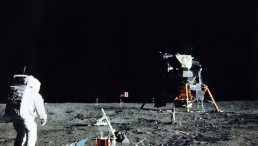
NASA Advances Lunar Levitation Robot Train Concept for Moon Base by 2030s To Develop Science Fiction-Like Projects
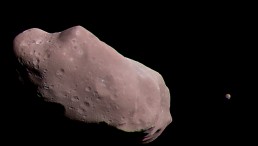
Car-Sized Asteroid Made a Super Close Approach to Planet Earth in Near Miss Flyby

Massive X8.7 Solar Flare From Super-Active Sunspot Causes Radio Blackouts Over North, South America Days After Widespread Aurora Displays
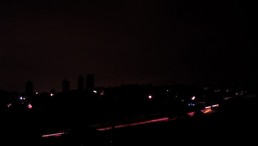
North America Suffers Radio Blackout After a Big X-Flare on Tuesday
How Interstellar Space Travel Works (Infographic)

Even the fastest humans and spacecraft launched thus far would take many thousands of years to reach the closest stars. Speeds about 75 times faster than this would be required if we hope to make an interstellar trip in less than a hundred years.
To understand the difficulty of interstellar travel, one must comprehend the incredible distance involved. Even the closest star is more than 266,000 times farther away than our own sun. Consider the speed of light . Light, the fastest thing known, takes only 8 minutes to travel to us from the sun, but requires more than four years to get to the nearest star. A handgun bullet travels at 720 miles per hour, but would take nearly 4 million years to get to the nearest star. The fastest object ever launched into space is the Voyager 1 probe , and it would take nearly 75,000 years to make the trip. Today’s chemical rockets are far too slow for interstellar travel . To have a hope of reaching the closest star in less than a hundred years, we would have to accelerate a starship to nearly 30 million mph. Rockets using nuclear fusion or antimatter propulsion could do the job, but they would have to be developed. It is theoretically possible that by warping space, a starship might travel faster than light without violating the laws of physics within its own bubble of space-time.
- Gallery: Visions of Interstellar Starship Travel
- Star Trek's Warp Drive: Are We There Yet? | Video
- The Top 10 Star Trek Technologies
Join our Space Forums to keep talking space on the latest missions, night sky and more! And if you have a news tip, correction or comment, let us know at: [email protected].
Get the Space.com Newsletter
Breaking space news, the latest updates on rocket launches, skywatching events and more!

Karl's association with Space.com goes back to 2000, when he was hired to produce interactive Flash graphics. From 2010 to 2016, Karl worked as an infographics specialist across all editorial properties of Purch (formerly known as TechMediaNetwork). Before joining Space.com, Karl spent 11 years at the New York headquarters of The Associated Press, creating news graphics for use around the world in newspapers and on the web. He has a degree in graphic design from Louisiana State University and now works as a freelance graphic designer in New York City.
SpaceX launching 50th mission of the year today
How SpaceX's private Polaris Dawn astronauts will attempt the 1st-ever 'all-civilian' spacewalk
The summer of 2023 was Earth's hottest in 2,000 years, scientists find
- 2 SpaceX launching 50th mission of the year today
- 3 New book 'Challenger: A True Story of Heroism & Disaster on the Edge of Space' out today
- 4 How SpaceX's private Polaris Dawn astronauts will attempt the 1st-ever 'all-civilian' spacewalk
- 5 This time, we take it from no one: Why opening the High Frontier of space can be different (op-ed)
The Impossible Physics of Faster-Than-Light Travel
Traveling faster than light is impossible. But if it weren't, what would it look like?
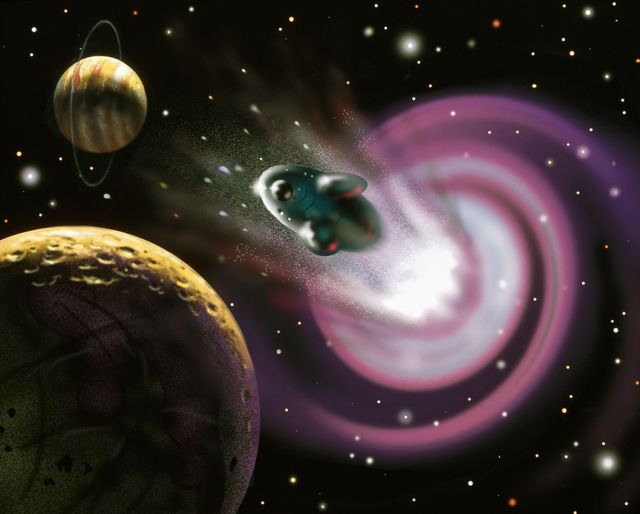
Traveling faster than the speed of light is a staple of science fiction. Whether it's jumping to hyperspace, engaging the warp drive, or opening the stargate, most stories about interstellar travel have some hack to get from point A to point B faster than light.
But here in the real world, we have to obey the laws of physics. And physics is very strict about nothing moving faster than the speed of light. Or is it? While the laws of relativity forbid you and I from moving faster than light, the mathematics of relativity still work even at faster-than-light speeds. This means we can find out what it would look like if we could break the universe's speed limit.
Picture two spaceships headed from Earth to a distant star 100 light-years away. The first ship leaves at 50 percent of the speed of light, so it would take 200 years to arrive. The second ship has some kind of warp drive and leaves at twice the speed of light, 100 years after the first. What does that look like?
.css-2l0eat{font-family:UnitedSans,UnitedSans-roboto,UnitedSans-local,Helvetica,Arial,Sans-serif;font-size:1.625rem;line-height:1.2;margin:0rem;padding:0.9rem 1rem 1rem;}@media(max-width: 48rem){.css-2l0eat{font-size:1.75rem;line-height:1;}}@media(min-width: 48rem){.css-2l0eat{font-size:1.875rem;line-height:1;}}@media(min-width: 64rem){.css-2l0eat{font-size:2.25rem;line-height:1;}}.css-2l0eat b,.css-2l0eat strong{font-family:inherit;font-weight:bold;}.css-2l0eat em,.css-2l0eat i{font-style:italic;font-family:inherit;} This creates a kind of 'sonic boom' made of light
In relativity, the answer depends greatly on perspective. From the Earth, it looks like one ship leaves and travels a good distance before another ship moving four times as fast overtakes it. From the perspective of the slower ship, things look a little different.
The faster-than-light ship is moving so fast that it can outrun any light that it emits. This creates a kind of 'sonic boom' made of light, which produces some interesting effects. As the warp-capable ship overtakes the slower one, and after the two ships pass each other, the light the faster ship emits is still traveling to the slower one.
The result is that the first time the slower ship can see the faster one is when they're right on top of each other. From the perspective of the slower ship, the warp ship will simply appear out of nowhere. Then, the light from two directions will reach the slower ship all at once, and it will perceive two versions of the ship moving away in both directions.
From the perspective of the slower ship, the warp ship will simply appear out of nowhere.
There are all sorts of other strange results that happen when traveling faster than light, which might be why the universe forbids it. Unfortunately, it seems likely that warp drives and hyperspace shall forever exist only in the realm of science fiction.

.css-cuqpxl:before{padding-right:0.3125rem;content:'//';display:inline;} Science .css-xtujxj:before{padding-left:0.3125rem;content:'//';display:inline;}

Simulations Warn of Earth Turning Inhospitable

The Source of All Consciousness May Be Black Holes

Ancient Human Lava Tube Habitation Discovered

Kitchen Renovation Yields 17th Century Coin Hoard

Discovery May Create New Breed of Capacitors
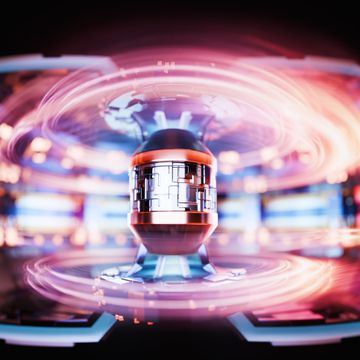
Tungsten Tokamak Breaks Another Fusion Record

A 152-Year-Old Shipwreck Found While Fishing
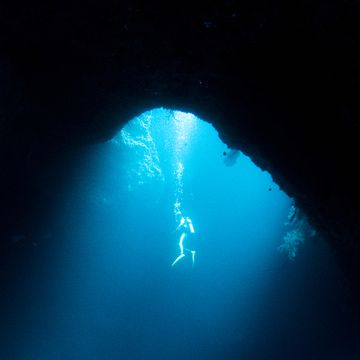
Meet the Taam Ja': The World's Largest Blue Hole

Huge Discovery Could Ease World's Helium Woes

Bodies Mysteriously Mummified in Andes Town

Ancient Egyptian Pharoah’s Vacation Home Unearthed
- Mobile Site
- Staff Directory
- Advertise with Ars
Filter by topic
- Biz & IT
- Gaming & Culture
Front page layout
The new golden record —
Ai in space: karpathy suggests ai chatbots as interstellar messengers to alien civilizations, andrej karpathy muses about sending a llm binary that could "wake up" and answer questions..
Benj Edwards - May 3, 2024 7:04 pm UTC

On Thursday, renowned AI researcher Andrej Karpathy , formerly of OpenAI and Tesla, tweeted a lighthearted proposal that large language models (LLMs) like the one that runs ChatGPT could one day be modified to operate in or be transmitted to space, potentially to communicate with extraterrestrial life. He said the idea was "just for fun," but with his influential profile in the field, the idea may inspire others in the future.
Further Reading
Karpathy's bona fides in AI almost speak for themselves, receiving a PhD from Stanford under computer scientist Dr. Fei-Fei Li in 2015. He then became one of the founding members of OpenAI as a research scientist, then served as senior director of AI at Tesla between 2017 and 2022. In 2023, Karpathy rejoined OpenAI for a year, leaving this past February. He's posted several highly regarded tutorials covering AI concepts on YouTube, and whenever he talks about AI, people listen.
Most recently, Karpathy has been working on a project called " llm.c " that implements the training process for OpenAI's 2019 GPT-2 LLM in pure C , dramatically speeding up the process and demonstrating that working with LLMs doesn't necessarily require complex development environments. The project's streamlined approach and concise codebase sparked Karpathy's imagination.
"My library llm.c is written in pure C, a very well-known, low-level systems language where you have direct control over the program," Karpathy told Ars. "This is in contrast to typical deep learning libraries for training these models, which are written in large, complex code bases. So it is an advantage of llm.c that it is very small and simple, and hence much easier to certify as Space-safe."
Our AI ambassador
In his playful thought experiment (titled "Clearly LLMs must one day run in Space"), Karpathy suggested a two-step plan where, initially, the code for LLMs would be adapted to meet rigorous safety standards, akin to " The Power of 10 Rules " adopted by NASA for space-bound software.
This first part he deemed serious: "We harden llm.c to pass the NASA code standards and style guides, certifying that the code is super safe, safe enough to run in Space," he wrote in his X post. "LLM training/inference in principle should be super safe - it is just one fixed array of floats, and a single, bounded, well-defined loop of dynamics over it. There is no need for memory to grow or shrink in undefined ways, for recursion, or anything like that."
That's important because when software is sent into space, it must operate under strict safety and reliability standards. Karpathy suggests that his code, llm.c, likely meets these requirements because it is designed with simplicity and predictability at its core.
In step 2, once this LLM was deemed safe for space conditions, it could theoretically be used as our AI ambassador in space, similar to historic initiatives like the Arecibo message (a radio message sent from Earth to the Messier 13 globular cluster in 1974) and Voyager's Golden Record (two identical gold records sent on the two Voyager spacecraft in 1977). The idea is to package the "weights" of an LLM—essentially the model's learned parameters—into a binary file that could then "wake up" and interact with any potential alien technology that might decipher it.
"I envision it as a sci-fi possibility and something interesting to think about," he told Ars. "The idea that it is not us that might travel to stars but our AI representatives. Or that the same could be true of other species."
reader comments
Channel ars technica.

IMAGES
VIDEO
COMMENTS
A Groundbreaking Scientific Discovery Just Created the Instruction Manual for Light-Speed Travel. ... This sci-fi mode of practical interstellar travel, which television audiences first saw in ...
Interstellar travel is the hypothetical travel of spacecraft from one star system, ... If a spaceship could average 10 percent of light speed (and decelerate at the destination, for human crewed missions), this would be enough to reach Proxima Centauri in forty years.
The fastest ever spacecraft, the now- in-space Parker Solar Probe will reach a top speed of 450,000 mph. It would take just 20 seconds to go from Los Angeles to New York City at that speed, but it ...
Can anything travel faster than the speed of light? According to physics as we currently understand it, nothing with mass can surpass the speed of light in a vacuum, which is 300,000 kilometers ...
Bottom line: If humanity wants to travel between stars, people are going to need to travel faster than light. New research suggests that it might be possible to build warp drives and beat the ...
Still, various teams have proposed ways to at least reach a fraction of light speed and hasten our exploration of interstellar space. Back in 1958, researchers at San Diego-based defense ...
This creates a "warp bubble" that allows a craft to travel at incredible velocities — in some imaginings, many times faster than the speed of light. ... Cosmic butterfly or interstellar burger ...
New research suggests that it might be possible to build warp drives and beat the galactic speed limit. Faster than light travel is the only way humans could ever get to other stars in a ...
Moving at warp speed is no longer just a dazzling concept from science fiction, as researchers at the University of Alabama, Huntsville have proposed a new model for a warp drive that aligns with ...
Voyager 1 is about 17 light-hours distant from Earth and is traveling with a velocity of 0.006 percent of light speed, meaning it will take about 17,000 years to travel one light-year. Fortunately ...
Once accelerated to one-tenth the speed of light, the real journey begins. For 40 years, this little spacecraft will have to withstand the trials and travails of interstellar space. It will be ...
For the sake of this video, titled "NASA's Guide to Near-light-speed Travel" (shown above), it is assumed that the interstellar traveler (who appears to be an alien creature) has built a spacecraft that is capable at traveling at 90 percent the speed of light (0.9 c).
Neil deGrasse Tyson Explains Faster Than Light Interstellar TravelSubscribe: https://www.youtube.com/sciencetime24In this video, renowned astrophysicist and ...
Tech. Interstellar astronauts would face years-long communication delays due to time dilation. News. By Paul Sutter. published 5 December 2023. The laws of physics mean that communication with ...
Lecture 41: Interstellar Travel and Colonization Astronomy 141 - Winter 2012 3 To bridge interstellar distances, you need to accelerate your starship to near light-speed. A speed of 0.1c to reach nearest star in 50 years. Energy costs are enormous: Amount of fuel increases exponentially with the velocity Max efficiency for matter/antimatter ...
In the realm of science fiction, warp drives have long been a staple of interstellar travel, propelling spaceships to incredible velocities and allowing characters to traverse galaxies in a blink ...
Is interstellar travel doomed to remain in the realm of science fiction? Sticking to near future space propulsion only, how close can we get to the speed of ...
The idea of travelling at the speed of light is an attractive one for sci-fi writers. The speed of light is an incredible 299,792,458 meters per second. At that speed, you could circle Earth more than seven times in one second, and humans would finally be able to explore outside our solar system. In 1947 humans first surpassed the (much slower ...
1) Electromagnetic Fields. Most of the processes that accelerate particles to relativistic speeds work with electromagnetic fields — the same force that keeps magnets on your fridge. The two components, electric and magnetic fields, like two sides of the same coin, work together to whisk particles at relativistic speeds throughout the universe.
Key Takeaways. Interstellar distances are vast, and extremely advanced technology will be required if we (or aliens) want to visit other star systems. Cryosleep, light sails, wormholes, and warp ...
Their light appears brighter and whiter when looking into the direction of travel. The movies begin with the camera located nearly 400 million miles (640 million kilometers) away, with the black hole quickly filling the view. Along the way, the black hole's disk, photon rings, and the night sky become increasingly distorted — and even form ...
The space agency's new video entitled NASA's Guide to Near-light-speed Travel assumed that the interstellar traveler had built a spacecraft capable of traveling at least 90 percent of the speed of ...
If the near-light-speed space craft is interacting with matter that is moving slowly in the planetary reference frame, this will cause drag which will bleed off a portion of the engine's acceleration. A second big issue facing ships using constant acceleration for interstellar travel is colliding with matter and radiation while en route.
To understand the difficulty of interstellar travel, one must comprehend the incredible distance involved. Even the closest star is more than 266,000 times farther away than our own sun.
interstellar-travel; engineering; ion-thruster; speed-of-light; Share. Improve this question. Follow edited Dec 21, 2018 at 13:13. uhoh. 149k 53 ... point of view, an object will shrink in length, increase its mass, and time will run slower on it. As it approaches light speed, its length will approach zero, its mass will approach infinity, and ...
Check Out Space: The Longest Goodbye on the PBS YouTube channel: https://www.youtube.com/watch?v=MT-pV48XBI4Watch Space: The Longest Goodbye on Independent L...
Traveling faster than the speed of light is a staple of science fiction. Whether it's jumping to hyperspace, engaging the warp drive, or opening the stargate, most stories about interstellar ...
Karpathy's bona fides in AI almost speak for themselves, receiving a PhD from Stanford under computer scientist Dr. Fei-Fei Li in 2015. He then became one of the founding members of OpenAI as a ...